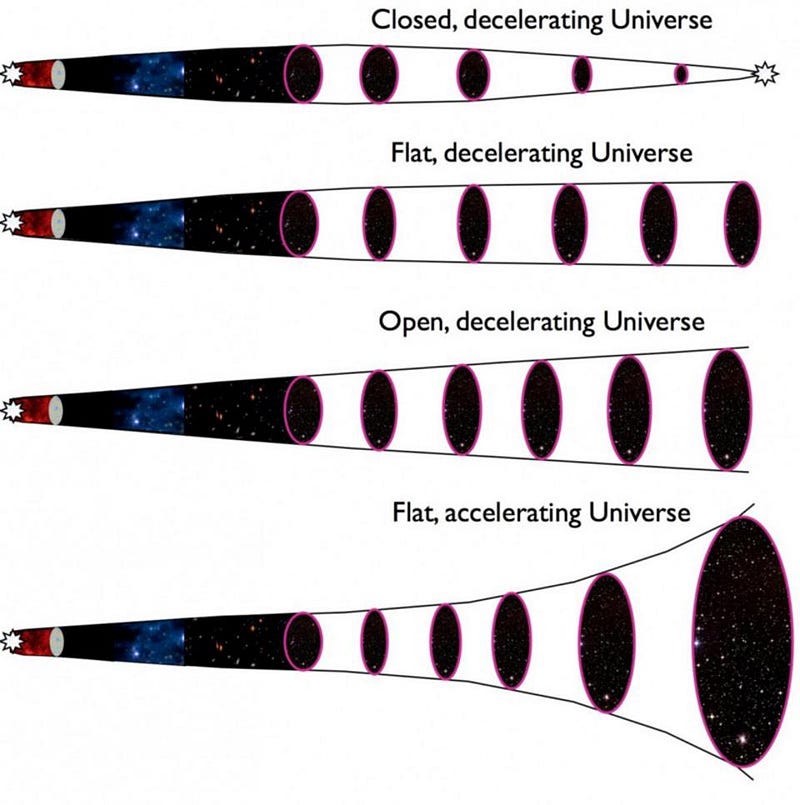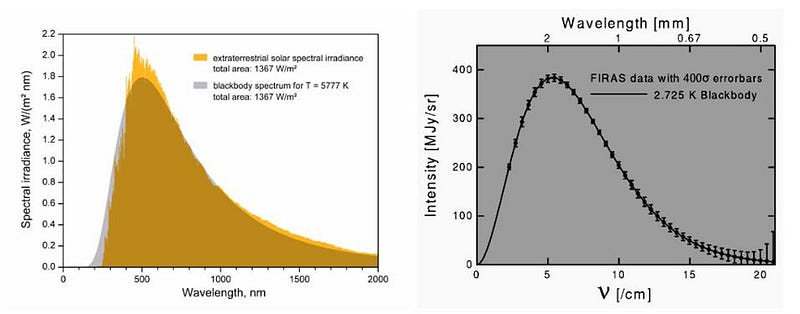Why Isn’t Anyone Seriously Challenging The Big Bang?

Is it groupthink? Or is there a deeper reason?
In the early half of the 20th century, even after the discovery of the expanding Universe, physicists considered a wide variety of origin stories for our Universe. In the mid-1960s, the cosmic microwave background — widely interpreted as the leftover glow predicted by the Big Bang — was discovered. While many considered that the decisive evidence in favor of the Big Bang, others dug in harder to non-standard positions. Alternative cosmologies didn’t just persist, they grew in number and in detail.
As recently as 20 years ago, the Big Bang was one of many ideas that scientists continued to entertain: quasi-steady state theory, plasma cosmology, and quantized redshifts remained mainstays in the scientific literature. But today, it’s largely crackpots and a few fringe contrarians who muster even the flimsiest of challenges to the consensus position: that the Universe began with a hot Big Bang. Is the field of cosmology succumbing to groupthink, as its detractors often claim, or is the lack of alternatives justified? Let’s dive in and find out.

If we want to examine any scientific theory, the first thing we need to do is understand what the theory assumes, what it predicts, and to compare those predictions with what’s been measured. The big idea of the Big Bang came about as scientists began to investigate the mathematical properties of Einstein’s General Relativity: the theory of gravity that was put forth in 1915 to supersede Newton’s law of universal gravitation. Unlike Newtonian gravity, General Relativity:
- brought gravity into a framework that was consistent with the speed of light being the cosmic speed limit,
- was able to explain the orbit of Mercury and how its perihelion precessed over the centuries,
- and predicted novel effects like the bending of starlight, gravitational lensing, gravitational time delays, and gravitational redshifts and blueshift.
By the end of 1919, it was clear that General Relativity succeeded where Newtonian gravity did not, and that its consequences — of spacetime being a fabric whose curvature was determined by matter and energy — could not be ignored. That’s the first assumption: that General Relativity is our theory of gravity.

From there, people started searching for, finding, and working out the consequences of various exact solutions in General Relativity. Unlike in Newtonian gravity, this is incredibly difficult. In Newtonian gravity, if you can describe the positions and masses of every object in your Universe at any one moment in time, you can know the effects of gravity everywhere and always. But in Einstein’s General Relativity, only a few spacetimes are exactly solvable, and they’re all relatively simple cases. For instance:
- We can solve an empty Universe: that’s Minkowski space.
- We can solve for a Universe with one uncharged, non-rotating mass: the Schwarzschild solution.
- We can write down the equations for a Universe containing one massive, rotating object: the Kerr solution.
- And we can solve the equations governing spacetime for a Universe that’s uniformly filled with matter and radiation: we get the Friedmann equations.
This last option, as was recognized almost immediately, could represent our Universe. If our Universe is homogeneous (the same in all location) and isotropic (the same in all directions), even on average, even only on the largest of cosmic scales, the Friedmann equations will tell us how the Universe evolves over time.

Specifically, it must evolve and cannot be static: it has to either expand or contract. When galaxies were identified as being objects outside of the Milky Way, and then observed to have greater redshifts at greater distances, it was clear that the picture of an expanding Universe, consistent with the Friedmann equations (and hence, an isotropic, homogeneous Universe) remained valid. One — but not the only — interpretation of that involved a tremendous extrapolation: the Big Bang.
What the Big Bang hypothesized was that the volume which the objects within our Universe occupied increased over time, and hence the Universe got less dense as time went on, as well as cooler, as light within it became shifted to longer wavelengths and lower temperatures.
But in addition to extrapolating forwards, we could extrapolate backwards in time as well: to a hotter, denser state. In fact, there was no limit to this, in principle. We could go back to arbitrarily high temperatures and arbitrarily large densities, and if the Big Bang were correct, the act of expanding and cooling during the evolution of the cosmos would lead to three major predictions, in addition to the expanding Universe.

1.) A cosmic web of growing, evolving structure. If we go back in time, we should find galaxies that are smaller, less massive, filled with younger stars, and are less evolved in their shape. Over time, they gravitationally grow and merge together, so galaxy clusters and a large cosmic web should be richer at late times (and close distances) and sparser at early times (and larger distances). And, going way back in time, we should see eras where there are no galaxy clusters, no galaxies, and eventually, not even any stars.
The formation of structure is an enormous success for the Big Bang, with dark matter and dark energy being necessary but sufficient ingredients to get our observations to match the model’s predictions exquisitely. Galaxies grow, evolve, become richer in heavy elements, and cluster together in precisely the fashion that the Big Bang predicts. Even with the advent of modern deep galaxy surveys, the agreement is spectacular.

2.) A low-energy, omnidirectional, leftover glow of radiation. If the Universe were hotter, denser, and more uniform in the past, eventually you’d reach a point where it was so hot and dense that even neutral atoms couldn’t form. The instant an electron bound to an atomic nucleus, a sufficiently energetic photon would come along and reionize that atom, preventing neutral atoms from stably forming. Only when the Universe expanded and cooled sufficiently would these photons lose enough energy that the Universe could become neutral, “releasing” that radiation which would stretch its wavelength as the Universe expanded.
This “release” typically occurs at a temperature of a few thousand Kelvin, meaning that the temperature of this background today should be only a few degrees above absolute zero. Moreover, this radiation should have the spectrum of a perfect blackbody, with only tiny imperfections at the ~0.01% level or less. This leftover glow — originally called the primeval fireball and today known as the cosmic microwave background — was discovered in the mid-1960s, and has been verified to be blackbody in spectrum and to have imperfections in it at the 1-part-in-30,000 level.
In many ways, it is the most spectacular confirmation of a scientific theory in history.

3.) A particular set of ratios for the light elements, even before any stars were ever formed. Even before neutral atoms could form, it was hot and dense enough that the Universe couldn’t even form atomic nuclei. Only free protons and neutrons could exist, as the instant they fused together to create deuterium, another particle would come along and blast them apart. Only after sufficiently cooling could deuterium stably form, whereupon it would combine with other protons, neutrons, deuterons, and the elements that formed subsequently to produce whatever was possible.
But because of how quickly the Universe expands and cools, these reactions can only take place briefly. After the dust settles, the Universe becomes about 75% hydrogen, 25% helium-4, 0.01% each helium-3 and deuterium, and about 0.0000001% lithium-7. The science of Big Bang Nucleosynthesis — the process by which these elements are formed — is now standard fare for graduate students, and has been observationally validated for galaxies, quasars, gas clouds, and from the cosmic microwave background as well.

The overwhelming agreement between the Big Bang’s predictions and these observations — including in greater and greater detail — was what led to its widespread acceptance. Initial alternatives fell by the wayside as:
- non-relativistic ideas, like the Milne Universe, failed to account for the subsequently verified tests of General Relativity, like the Pound-Rebka experiments,
- the idea of tired light cosmology, where redshift was due to light losing energy as it traveled through space, was discredited by the observed sharpness of distant galaxies,
- and the idea of the early Steady State Theory, which predicted a low-energy, background glow of reflected starlight, failed to match the observed spectrum of the cosmic microwave background.
Still, new challenges emerged. Some, like the quasi-steady state model, added proverbial “epicycles” to the earlier incarnations of contrarian ideas, seeking new physics or new phenomena to bring their theoretical predictions in line with the now-robust observations that contradicted the earlier predictions. Still others sought to pursue alternatives rooted in gravitational theories other than General Relativity; the ones that made testably different predictions from Einstein’s theory have all been ruled out.
But one type of alternative took longer to rule out: those rooted in observational skepticism.

In particular, when very distant galaxies and quasars began to be discovered, they appeared to have an unusual property: their redshifts appeared to come in at specific values that were all multiples of one another. This suggested that redshifts might be quantized, and perhaps had a non-cosmological origin. Geoffrey Burbidge, William Tifft, and Halton Arp all explored alternative cosmologies that accounted for this, but large-area deep surveys have shown that galaxy and quasar redshifts aren’t quantized, after all. Although a few people still pursue these lines, the evidence is overwhelmingly against it.
Additionally, laboratory experiments on plasmas showed that electromagnetic effects could easily dominate gravitational ones, and so plasma cosmology — rebranded a few decades ago as the electric Universe — was developed to further flesh out this idea. Unfortunately, its predictions were in absurd conflict with observations: the Universe was always expanding and never contracting (a necessary component for plasma oscillations), gravitation dominates the Universe and is required to explain the details of the cosmic web, and the spectacularly blackbody nature of the cosmic microwave background all combined to rule this alternative out.

Today, the only serious challenges to the standard Big Bang picture come in the form of add-ons: Universes where exotic forms of matter or energy (including dark matter and dark energy) are present, Universes that depart significantly (but within the observational limits) from isotropy or homogeneity, Universes with a different theory of gravity than General Relativity (but that don’t conflict with any of General Relativity’s already-observed successes). All of the modern alternatives still possess a hot, dense, uniform, and rapidly expanding early state, which expands, cools, and gravitates to form the Universe we see today.
So what happened over the past few decades, that all of the major challenges to the Big Bang have fallen away? Two major events: the collection of large suites of high-quality data, which validated the Big Bang’s major predictions to incredibly high precision, and the fact that the main advocates of the alternatives — once they no longer became defensible on their own merits — got old and died.
If any scientifically viable alternatives to the Big Bang ever arise, almost every modern cosmologist would thoroughly welcome it, and then immediately put it to the test. The problem is that every such alternative is already ruled out by the evidence in hand. Until an idea arises that meets those necessary criteria, the Big Bang will stand alone as the only idea compatible with the full suite of data we now possess.
Starts With A Bang is written by Ethan Siegel, Ph.D., author of Beyond The Galaxy, and Treknology: The Science of Star Trek from Tricorders to Warp Drive.





